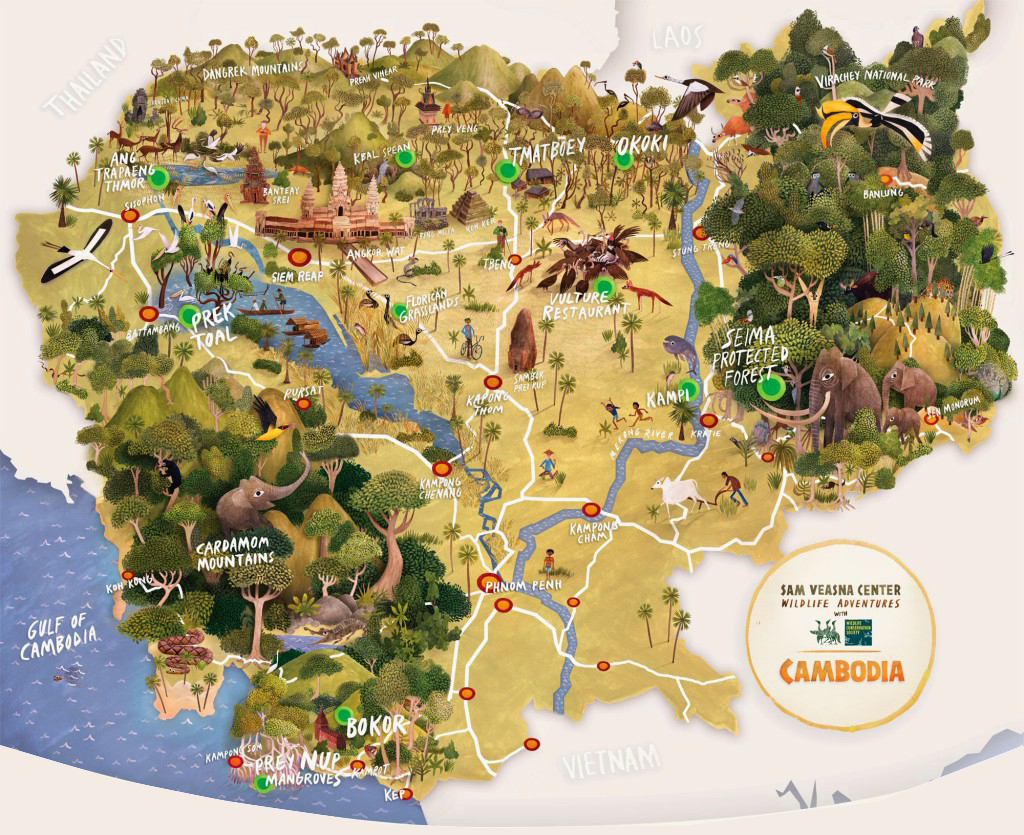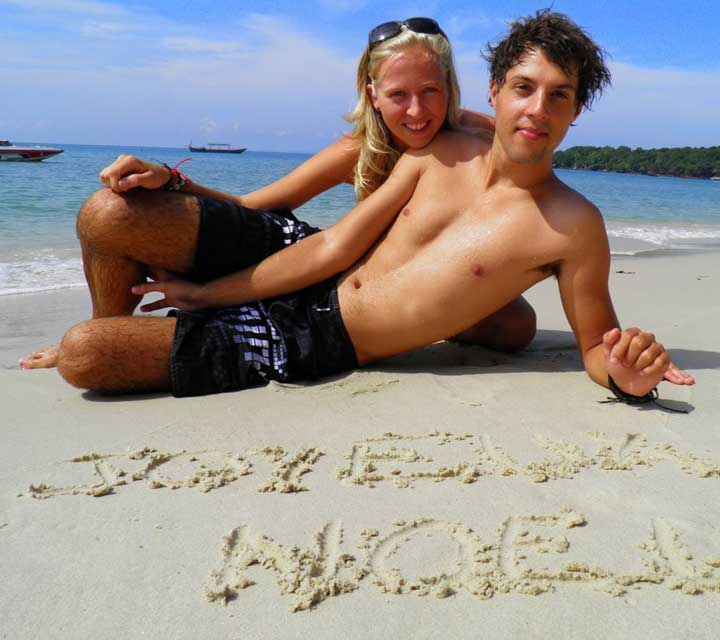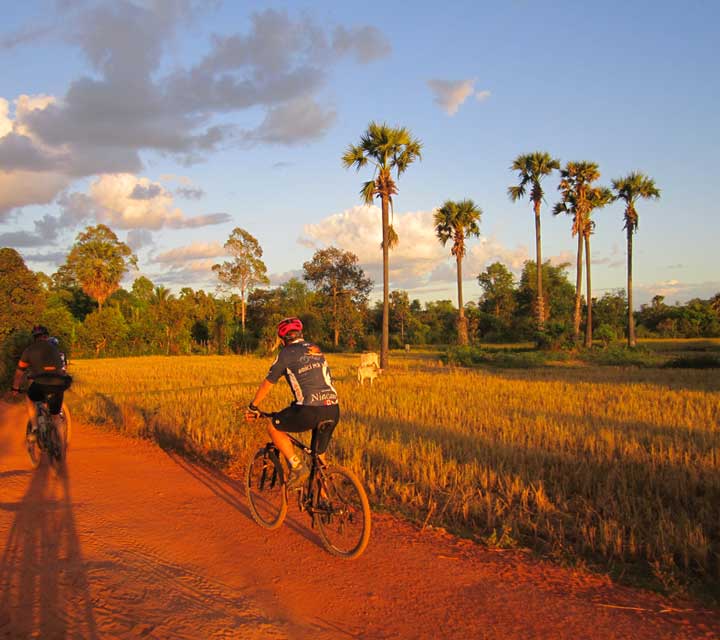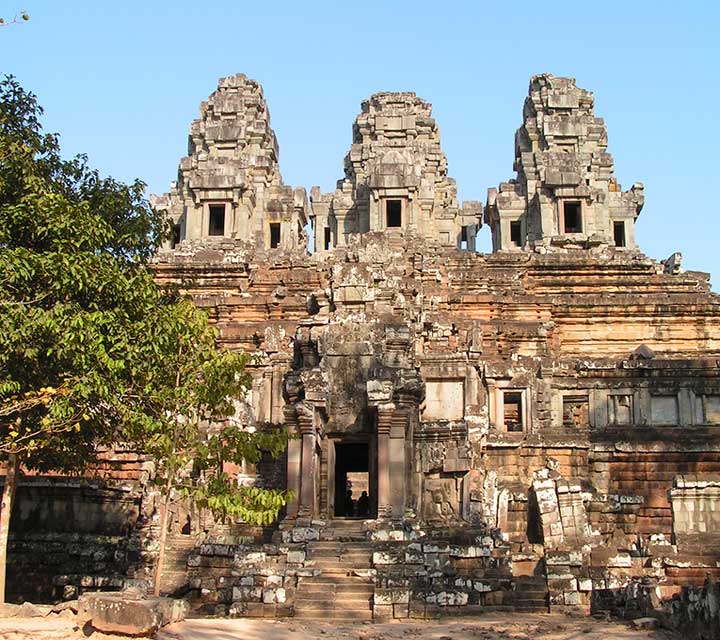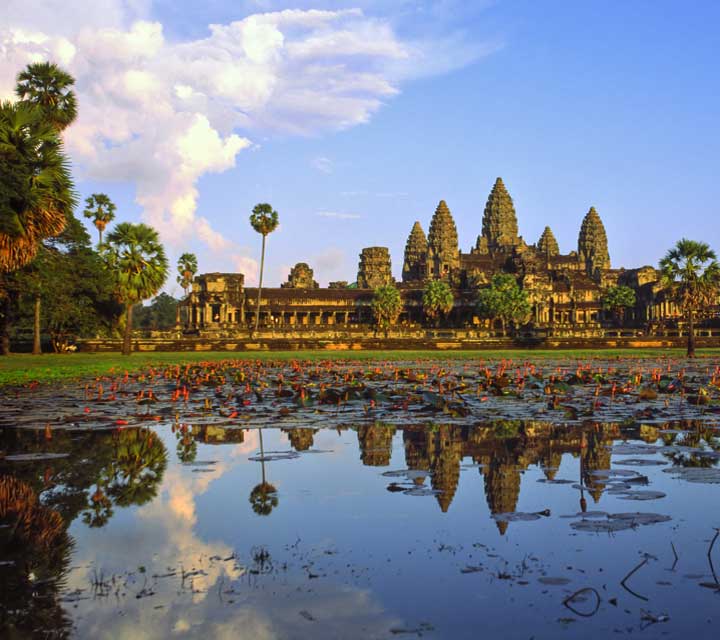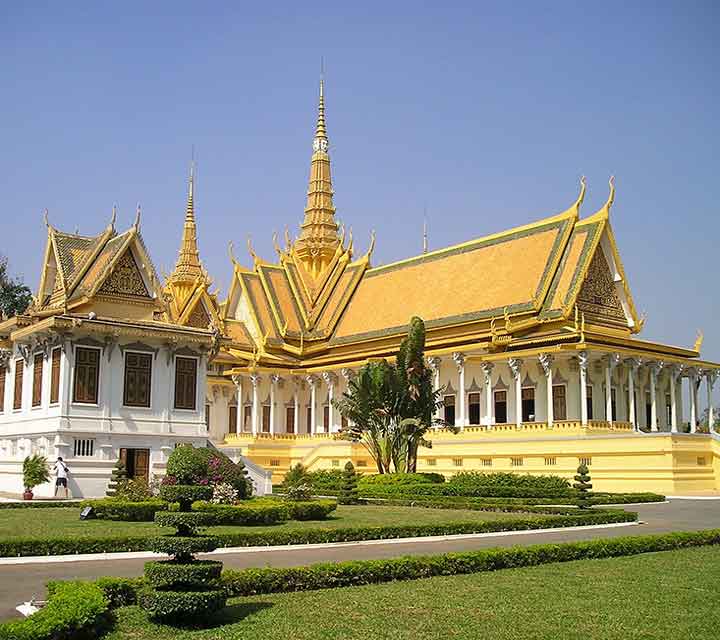Situated on the Indochinese peninsula, Cambodia is bordered by Thailand and Laos on the north and Vietnam on the east and south. The Gulf of Thailand is off the western coast. The size of Missouri, the country consists chiefly of a large alluvial plain ringed by mountains with the Mekong River to the east. The plain is centered around Lake Tonle Sap, which is a natural storage basin of the Mekong.
Population : 14.7 million
Capital City : Phnom Penh (Pop: 2 million)
People : Khmers (90%)
Language : Khmer
Currency : Riel and US dollars
Time Zone : GMT +7 Hours
- Passport and visa
PA passport with at least six months validity from the date of entry into Cambodia is required. We recommend you make a photocopy of your passport and keep it somewhere separate, or scan your passport and keep the scan in an accessible email account.
A 30 day visa on arrival is granted for many nationals at Phnom Penh International Airport, Siem Reap International Airport, and International Border Checkpoints. A passport sized photo is required to complete the visa.
The Royal Government of Cambodia has also recently approved e-visas. All you have to do is complete the online application form available at the official website, pay by credit card online, and include uploading a recent passport-size photo in JPEG/ PNG format. This e-visa is a single entry visa valid for 30 months from the date of issue for a 30 day stay.
Please note that visa extensions are available at the Immigration Department in Phnom Penh City for a 3 month stay. The Cambodian government is also set to offer an option for a 3-year tourist visa for certain nationalities in the future. - Phones & Internet service
Post in Cambodia is routed by air through Bangkok, making the service much more reliable than in the past. Telephone connections to the rest of the world are widely available but can be expensive. Internet access is available in most major tourist places such as hotels and restaurants.
- Weather
The tropical climate of Cambodia is relatively calm and consistent throughout the country due to its vast plains. The average temperature is 27 degrees celsius and there are two seasons: the humid monsoon season from April to October, and the dry season from November to March.
Between March and May, the dusty flatlands that stretch through Cambodia become hot and dry with temperatures reaching almost 40 degrees Celsius during midday. Due to lack of rainfall, the timing is perfect for escaping to the beaches of Sihanoukville.
The ideal season to explore the temples of Angkor Wat is during the rainy season which arrives in June and often lasts until November. The rain replenishes the lush greenery adding to the mystique of the mighty ruins, covered in moss and leafy trees. Eventually, the rain ushers in cooler temperatures by October.
Overall, the best time of year to visit Cambodia is from November to February. Temperatures reach a comfortable mid-20 degrees Celsius, skies are clear and evenings are cool. However, Cambodia’s weather can be unpredictable, so it may be a good idea to carry an umbrella or raincoat with you. It is also easy and inexpensive to purchase raincoats from supermarkets and general stores. - Festivals and National Holidays
The most important holiday for Cambodia is Khmer New Year, or Chaul Chnam Thmey (meaning, ‘enter new year’ in Khmer) held between April 14 and 16. These three days are based on the Buddhist calendar, marking the end of the harvest and the welcoming of the rainy season. Typically, each of the three days are distinct in their customs and traditions, with the first day believed to be when “angels” visit homes. You will find many Khmer locals spending this first day cleaning their homes and donning their best clothing. On following days, pious Buddhists will spend time giving alms to the poor, washing Buddhist idols with scented water and elders and enjoying Karlan rice cake, a sticky-rice treat roasted over charcoal.
Second in significance on to Chaul Chnam Thmey is Pchum Ben holiday, a 15-day religious festival in veneration of the dead. Celebrated in September or October, Khmer locals believe that this marks the time of year that the gate’s of hell open and ghosts of relatives once again roam the earth. Families pay respect to deceased ancestors of up to 7 generations, offering food and gifts at family altars. If you’re in Cambodia during this holiday, you might find that ancestral altars and temples are especially vibrant and lively.
Other important holidays include:
Victory Day, 7 January
Bonn Visak Bochea, Mid-May
Royal Ploughing Ceremony, May
Water Festival, October or November

Phnom Penh
Phnom Penh is the vibrant bustling capital of Cambodia. Situated at the confluence of three rivers, the mighty Mekong, the Bassac and the great Tonle Sap, what was once considered the 'Gem' of Indochina.
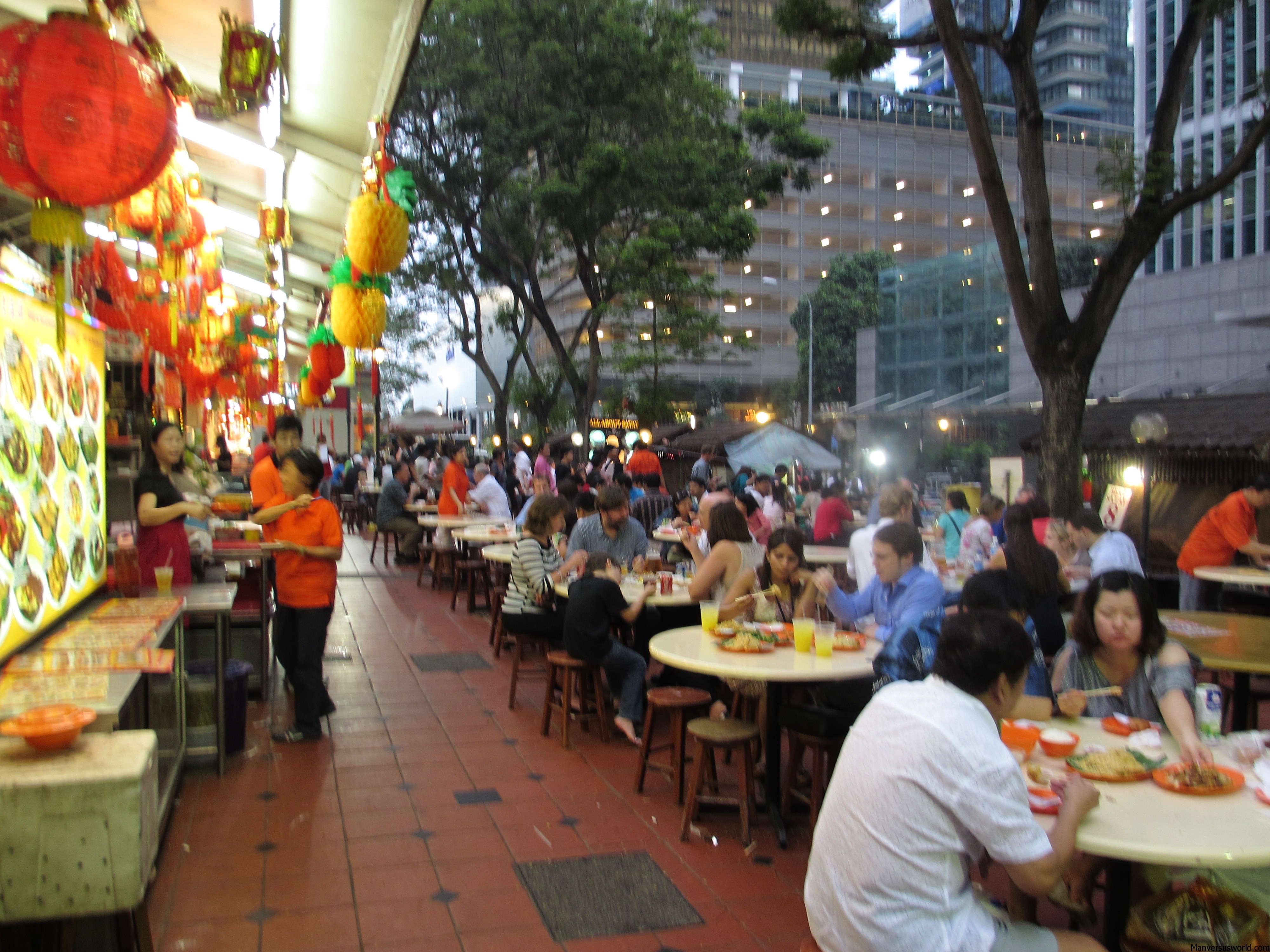
Siem Reap
Siem Reap boasts hundreds of natural and manmade attractions such as breathtaking temples, well-preserved colonial buildings, unique museums, cultural theme parks, expansive lakes and verdant mountains.

Kok Rong Island
There are a few things to know before you go to Koh Rong, which will have an important impact on how much you enjoy your time there.
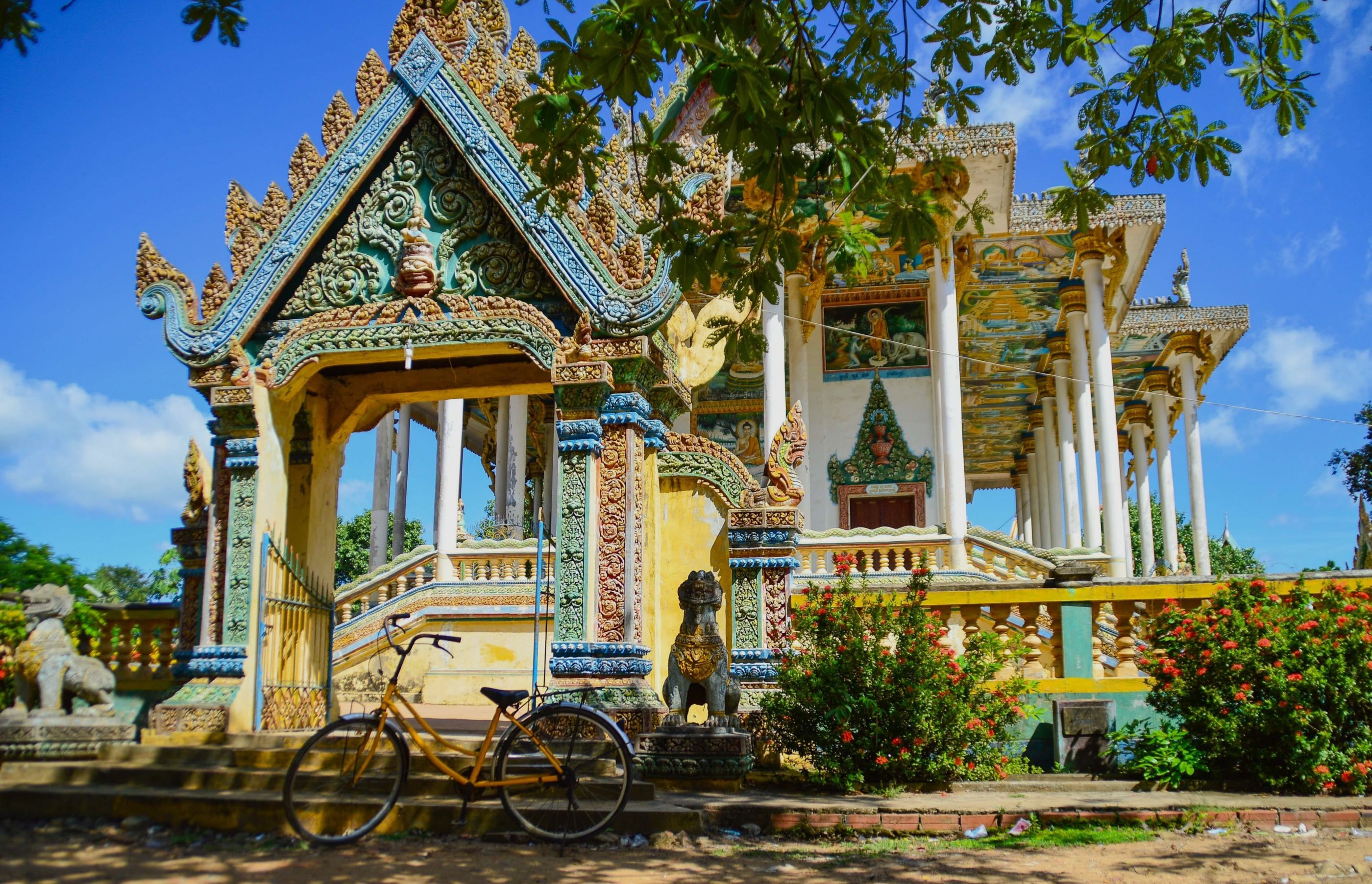
Battambang
Battambang is Cambodia's second-largest city and the capital of Battambang Province, which was founded in the 11th century.
